The march to the first Moon landing took a giant leap forward in May 1969 with the successful completion of Apollo 10, essentially a dress rehearsal for the landing mission. During their eight-day flight, the all-veteran Apollo 10 crew of Thomas P. Stafford, John W. Young, and Eugene A. Cernan rehearsed nearly every aspect of the Moon landing with the exception of the landing itself, flying to within nine miles of the lunar surface. Their mission sorted many of the unknowns for the lunar landing. While Apollo 10 traveled to the Moon, workers at NASA's Kennedy Space Center (KSC) in Florida rolled Apollo 11 to its launch pad. The Apollo 11 astronauts continued training for their July Moon landing mission while workers across NASA continued other preparations for the historic flight.
Apollo 10
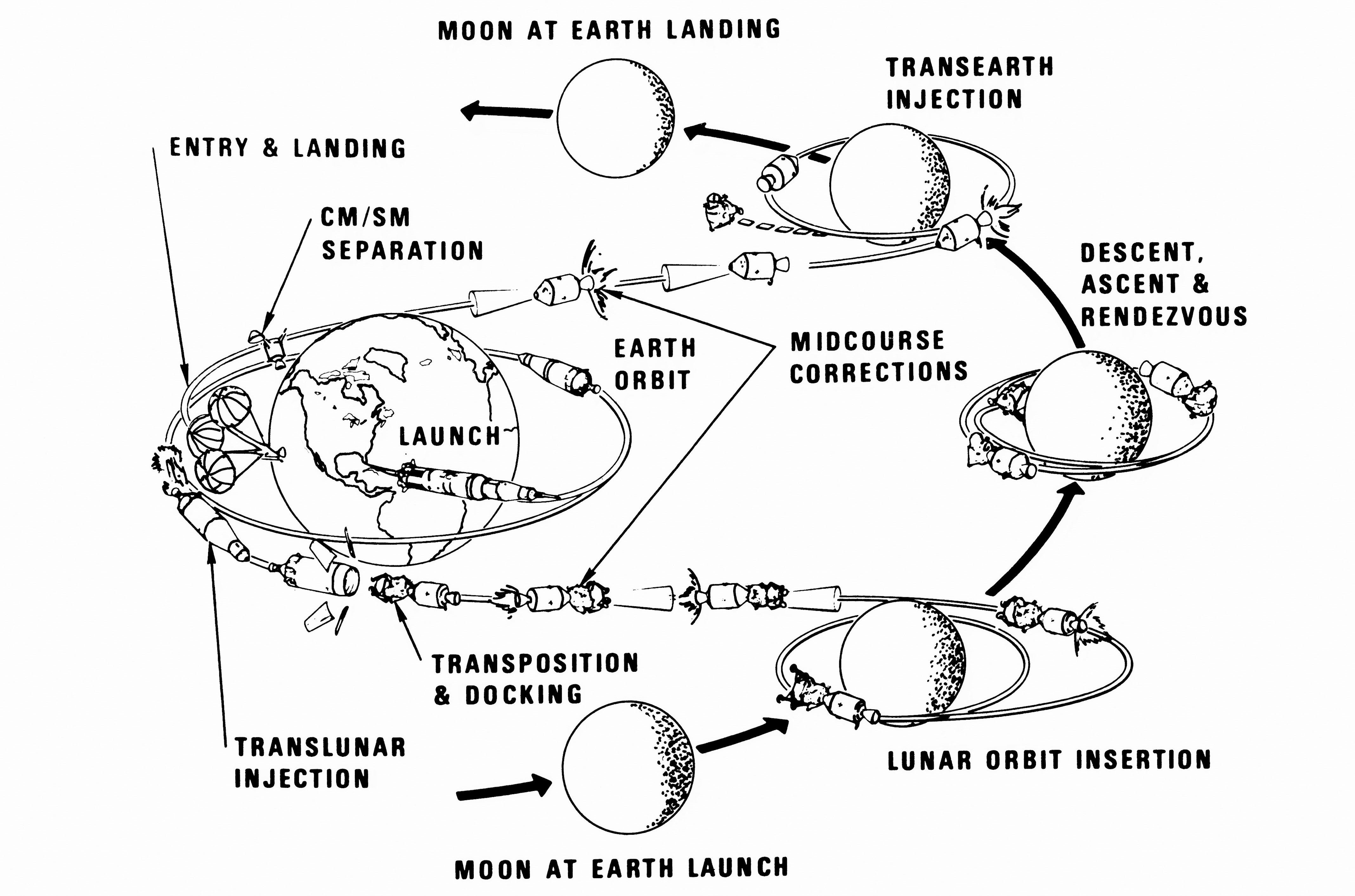
The Apollo 10 flight plan.
Designed as a final dress rehearsal for the Moon landing, the Apollo 10 mission plan replicated all aspects of that flight except for the landing itself. During the eight-day flight, Stafford, Young, and Cernan would spend three days traveling to the Moon before entering orbit around it. Stafford and Cernan would board the Lunar Module (LM) Snoopy, leaving Young aboard the Command Module (CM) Charlie Brown, and simulating a descent to the surface, fly to within 50,000 feet of the Moon. They would fly an approach to Apollo 11's designated landing site in the Sea of Tranquility, photographing the area in as much detail as possible. After eight hours, Stafford and Cernan would rejoin Young. The primary goal of the mission accomplished, they would leave lunar orbit and travel back to Earth for a splashdown in the Pacific Ocean. Apollo 10 would address unknowns about navigation and communications required for a successful lunar landing.



Left: Astronaut-geologist Harrison H. Schmitt, second from left, provides geology instruction to Apollo 10 astronauts Thomas P. Stafford, left, John W. Young, and Eugene A. Cernan. Middle: The Launch Control Center at NASA's Kennedy Space Center in Florida during the Apollo 10 Countdown Demonstration Test. Right: Cernan, left, Young, and Stafford pose in front of their Saturn V rocket.
During the final weeks before launch, Stafford, Young, and Cernan honed their skills in spacecraft simulators. They also received many hours of lunar geology instruction from experts, including Harrison H. Schmitt, the only geologist in the astronaut corps. At KSC, engineers completed the Countdown Demonstration Test on May 6, with Stafford, Young, and Cernan participating in the final hours, much as they would on launch day.
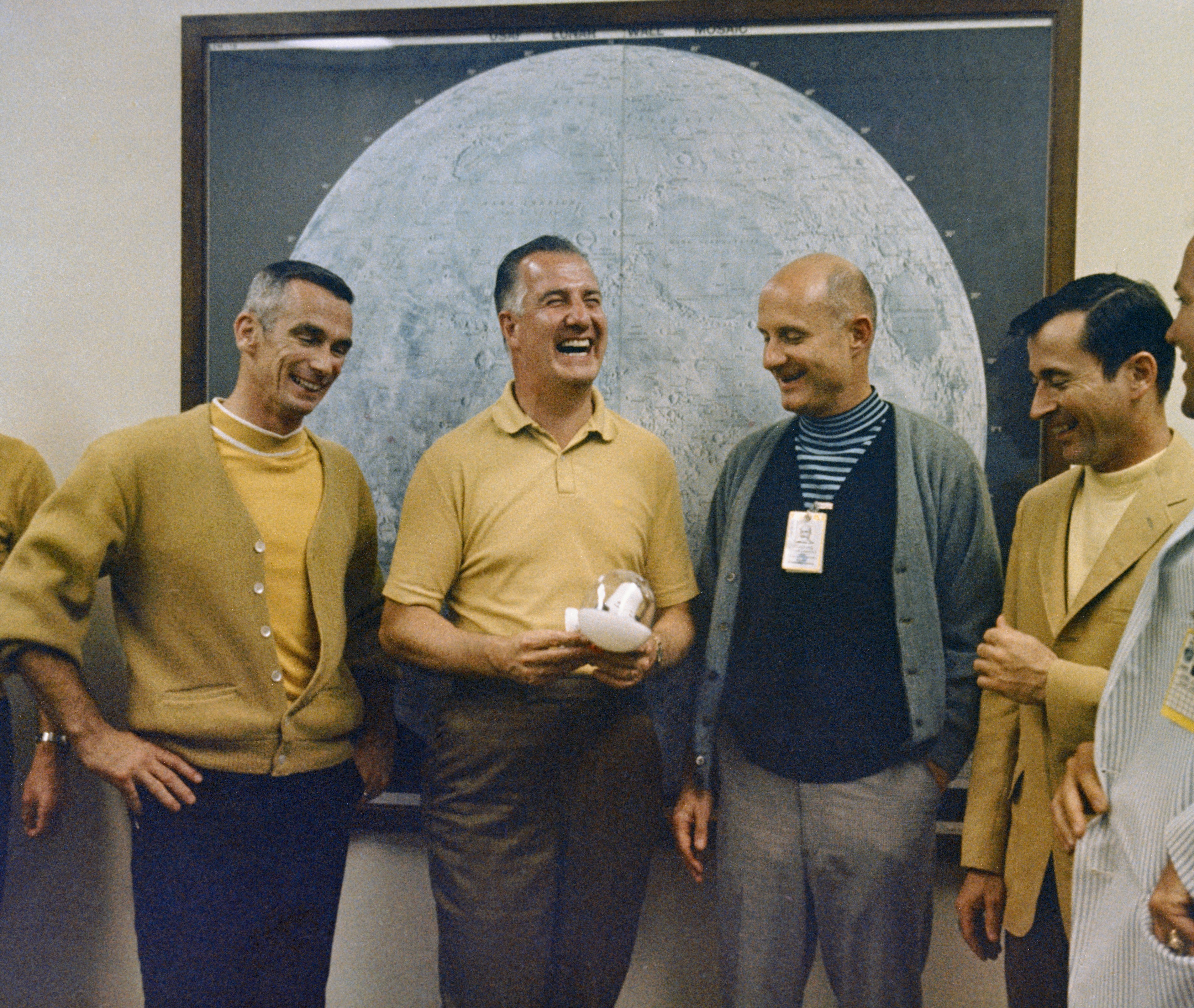
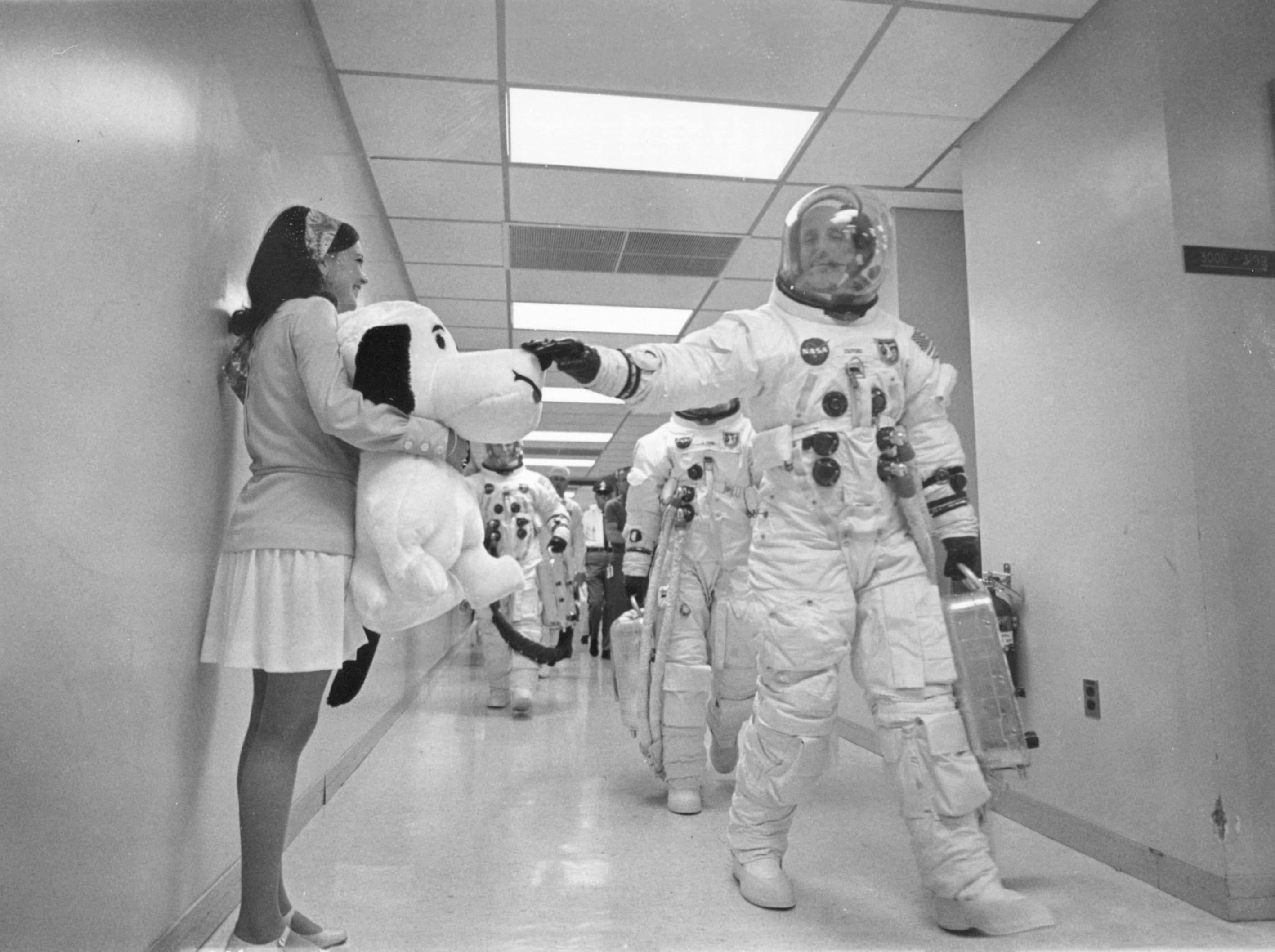
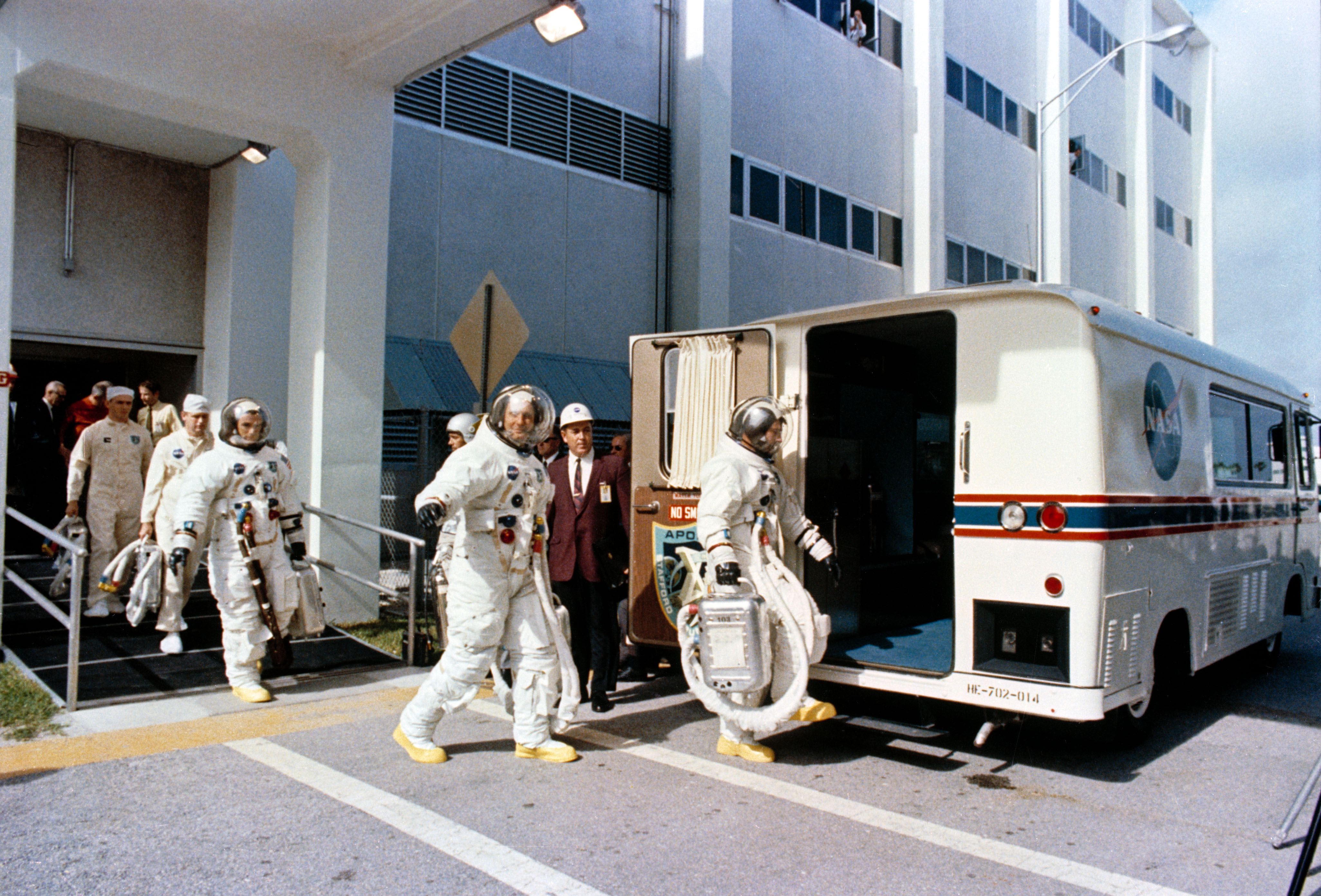
Left: Vice President Spiro T. Agnew, second from left, shares a laugh with Apollo 10 astronauts Eugene A. Cernan, left, Thomas P. Stafford, and John W. Young the day before launch. Middle: Stafford pats a giant stuffed Snoopy as he and Young and Cernan leave crew quarters for the trip to the launch pad. Right: Young, front, Stafford, and Cernan prepare to board the van for the ride to Launch Pad 39B.
Engineers began the countdown for Apollo 10 on May 13, as Stafford, Young, and Cernan finished their final simulator runs. Vice President Spiro T. Agnew joined them for dinner the night before launch. On launch day, they donned their spacesuits and boarded the van for the ride to Launch Pad 39B, where they climbed aboard their spacecraft.
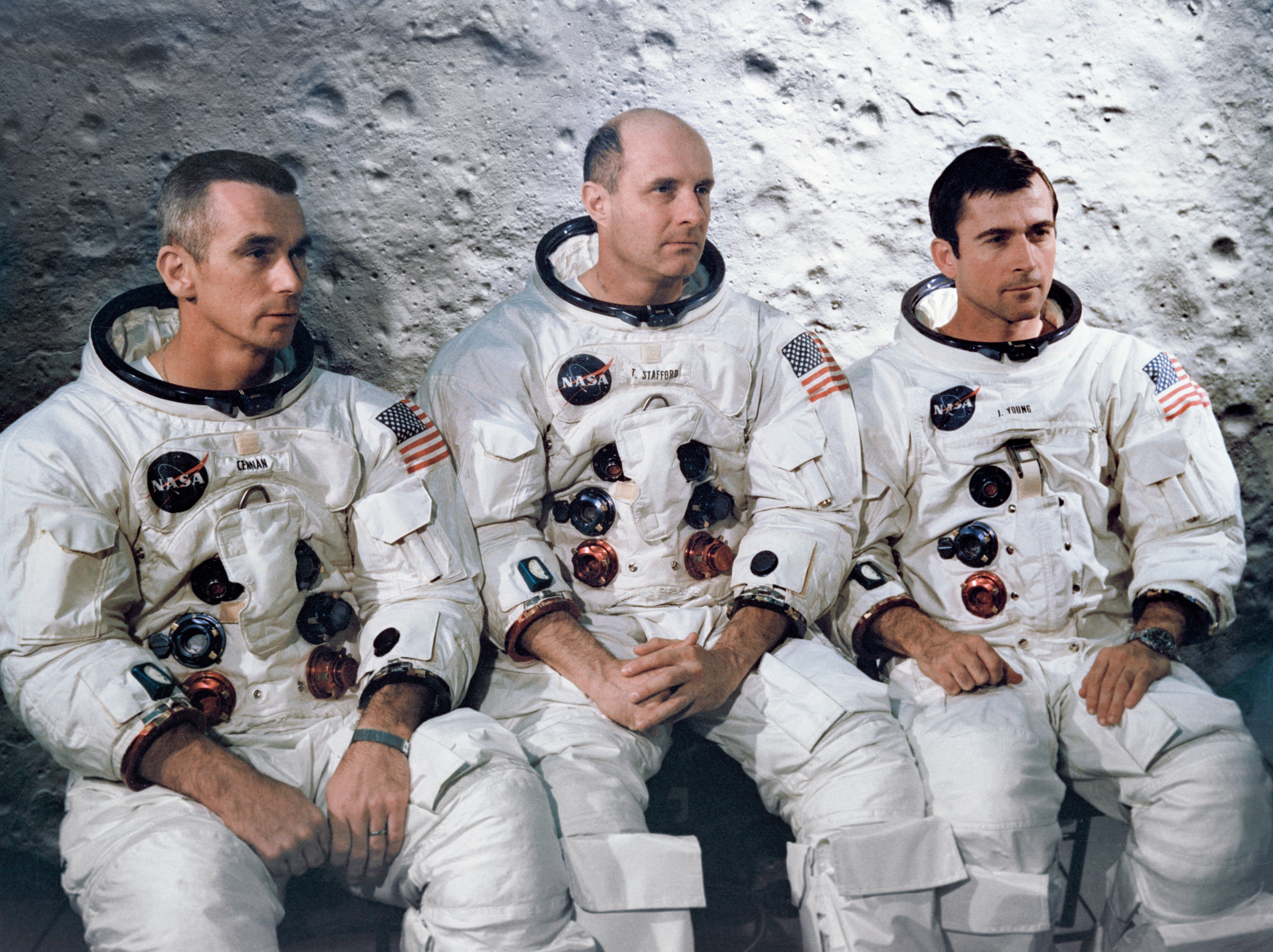
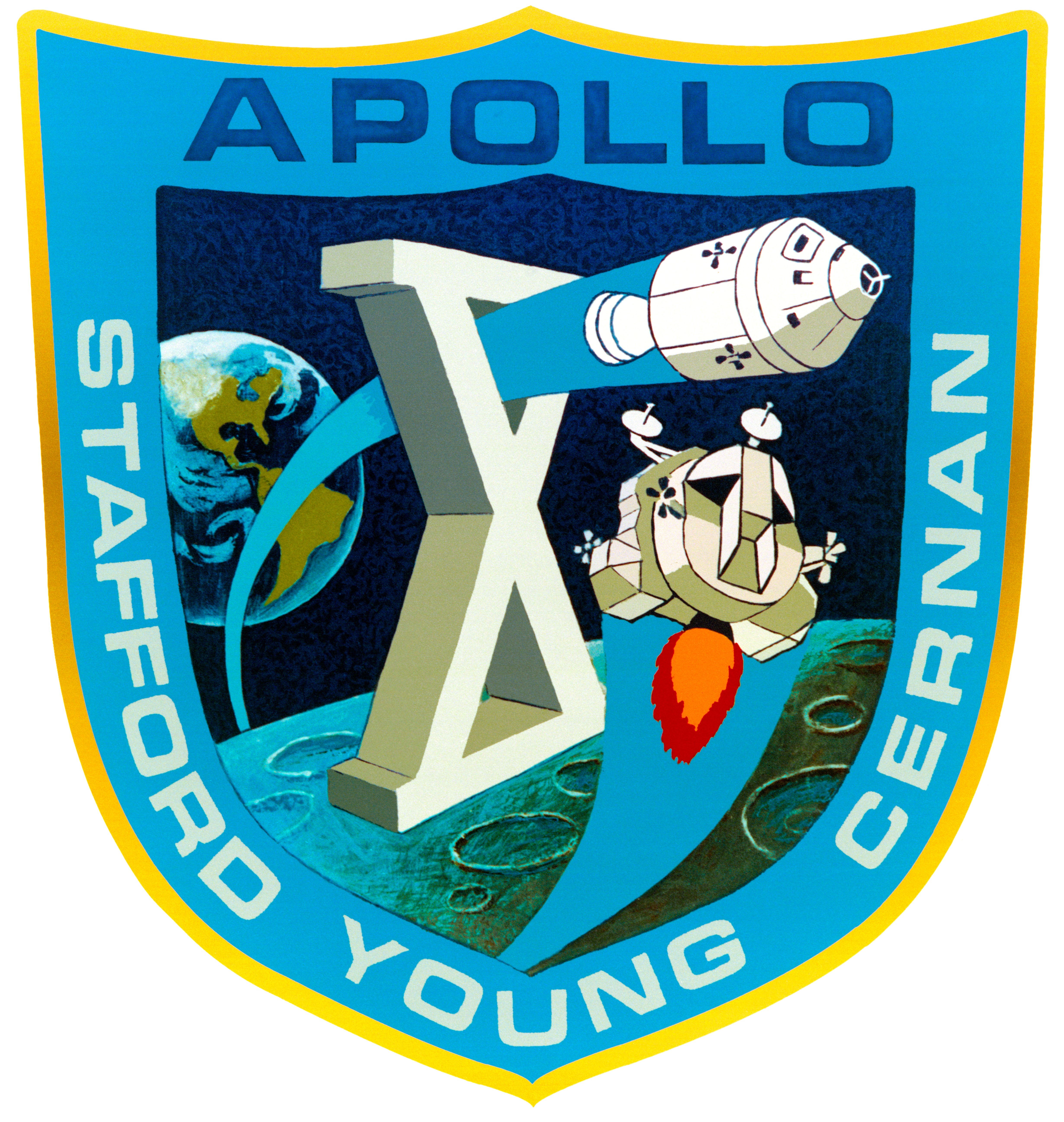
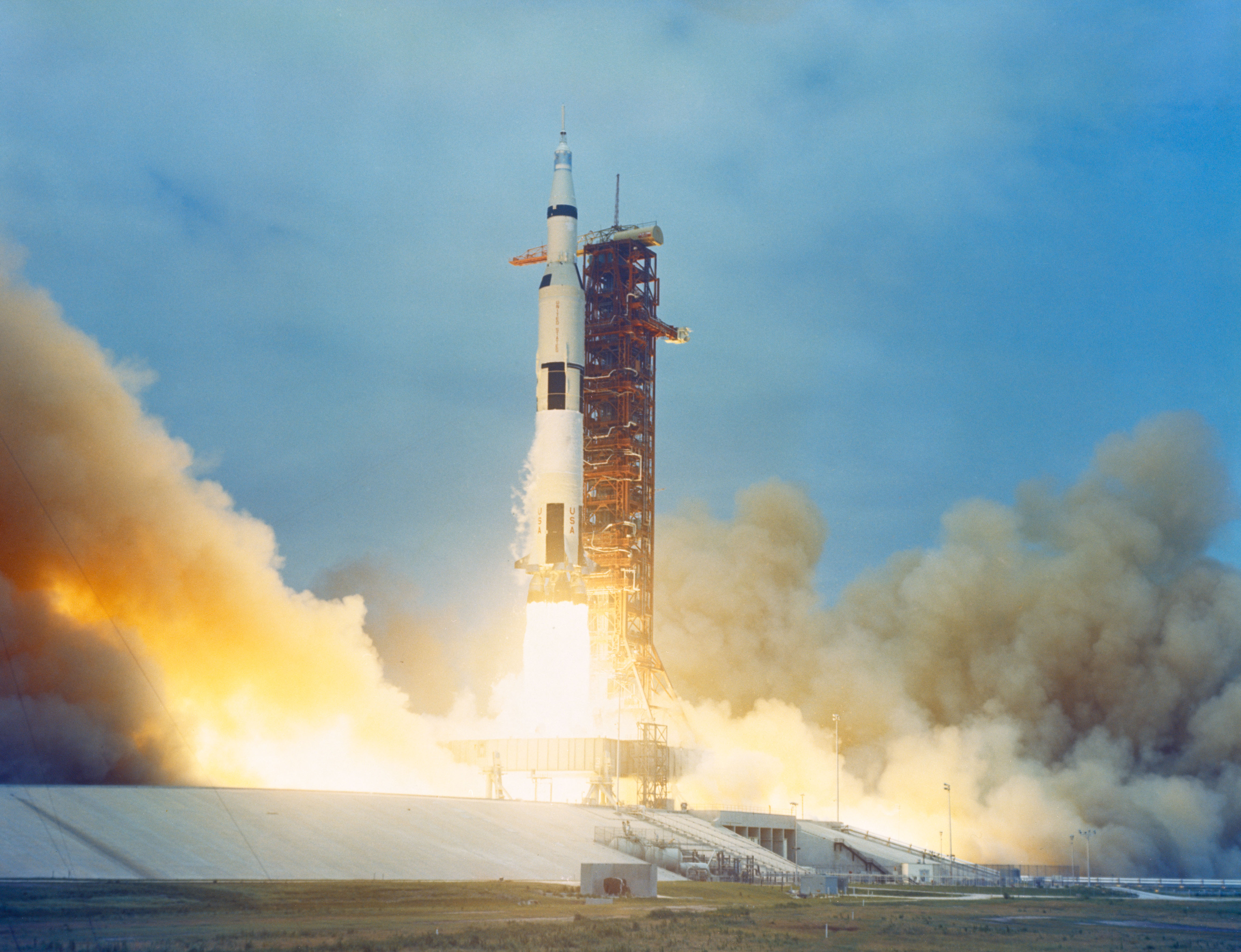
Left: The official photo of the Apollo 10 crew of Eugene A. Cernan, left, Thomas P. Stafford, and John W. Young. Middle: The Apollo 10 crew patch. Right: Liftoff of Apollo 10.
Apollo 10 lifted off at 12:49 p.m. EDT, the only lunar mission to use Launch Pad 39B. The three stages of the Saturn V rocket performed flawlessly, placing Apollo 10 and its attached S-IVB third stage into a temporary parking orbit around the Earth. Two and a half hours later, after the ground and crew verified the normal functioning of all spacecraft systems, Mission Control called up, "10, you're go for TLI," the Trans-Lunar Injection. The S-IVB fired for 5 minutes and 43 seconds, sending Apollo 10 toward the Moon. The engine burned so precisely that Apollo 10 needed only one of the planned four midcourse corrections.






